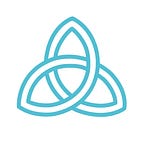Women in photojournalism
“Women have no business covering war,” declared a colleague of Ruth Fremson, during her first war assignment 20 years ago for the Associated Press in Sarajevo. As the comment suggests, photojournalism has historically been a world dominated by men. But times are rapidly changing.
Today, women make up the majority of students in undergraduate and graduate photojournalism programs. Many of the top photo editors of international publications are women, as are many of those that work under them.
This has not yet translated across the industry, however. There are still very few women working on assignment for the major international wire services. Over the last five years, women have only averaged around 15% of entries to the World Press Photo Contest, with the 2018 nominees standing a dismal 5 out of 51 — less than 10%.
There are numerous factors at play here. Women face greater challenges in photojournalism: from gender discrimination when it comes to hiring for assignment; sexual harassment; and the incompatibility of the strain on personal lives with societal expectations that still so often fall on female shoulders.
But for all the challenges they face, female photojournalists are in a unique position of strength. What is often overlooked is their ability to access people and places that men simply cannot. Arete photographer Kate Holt is an example of this — her work showcases many stories that it would be hard to imagine a man being able to gather.
“Women often see themselves a the victims of male domination in our industry” says Kate. “This fails to acknowledge that women are able to access a totally different type of story to their male counterparts. We need to play to this strength. Stop criticising the industry for it’s failings and embrace our ability to represent women’s issues in a different light.”
With the majority of the world’s poor being female (UN Women estimates that 60% of chronically hungry people are women and girls), female storytellers have the ability to shine a light on issues such as poverty, illness and gender-based violence.
One such example is Emily Macinnes’ long-term project about men who had suffered sexual abuse as young boys. "Several of them explicitly said ‘I couldn’t have shared that with you if you were a man.’ In that sense, I think it’s a privilege to be a woman,” she says. “People can be open and sensitive with you. It gives people permission to feel vulnerable in front of you, which is an incredible asset as a photojournalist.”
Even when not reporting on issues through a gender-sensitive lens, female photographers can still hold a distinctive advantage over their male counterparts. “I’m not seen as a viable threat and can blend in quicker,” remarks Susanna Ireland, a London-based photographer. “It enables me to capture more natural and un-self-conscious behaviour.”
Arete’s photographer pool includes a large number of extremely talented women from across the world. These women, along with their male counterparts, have the ability to tell the stories that need to be told; the stories that will help your organisation to make a difference.
— — — — — — — — — — — — — — — — — — — — — — — — — — — — — — —
Love our content? Sign up to the Arete newsletter to get your monthly dose of stories that #makeadifference.
